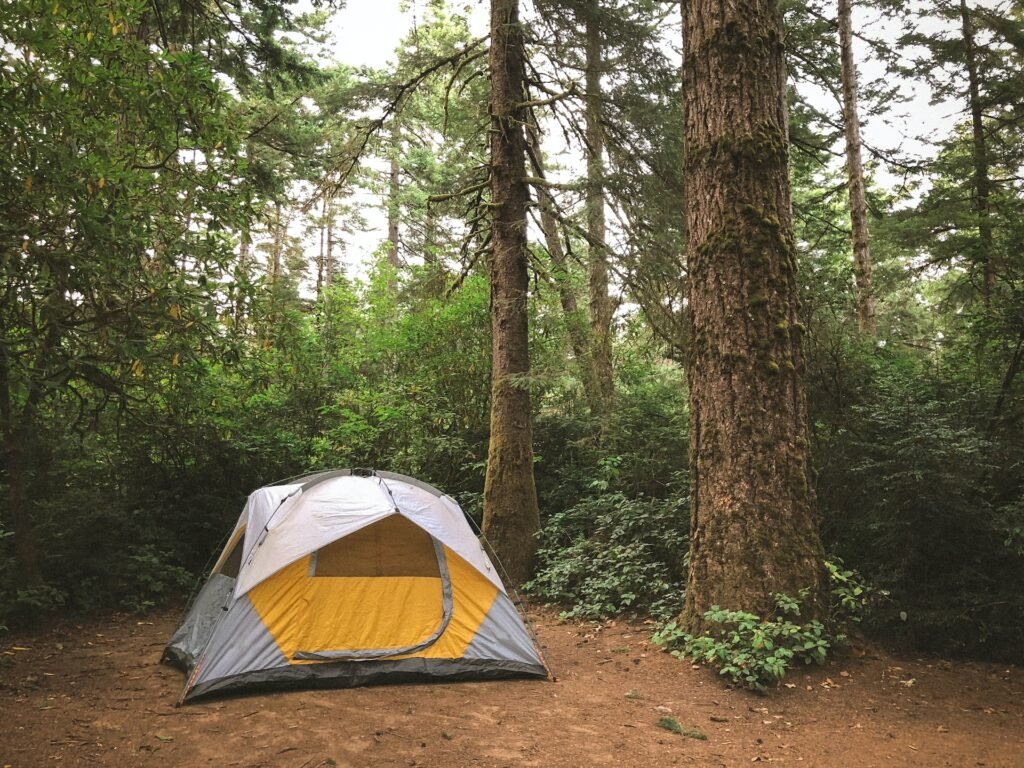When it comes to embarking on a hiking or trekking adventure, having the right camping tent is crucial. It not only provides a cozy shelter for a good night’s sleep but also protects you from the elements. However, with so many options available on the market, it can be overwhelming to choose the perfect tent for your needs. Here, we will walk you through everything you need to know about selecting the right camping tent, specifically tailored for hikers and trekkers.
Note: Some of the links here are affiliate links. There’s NO additional cost for you, but it does help our team to earn some coffee money to help write more tips for your next adventure.
1. Consider Your Camping Style
The first step in choosing the right camping tent is to consider your camping style. Are you a solo hiker, or do you often go camping with a group of friends? Do you prefer long hikes or shorter trips? Understanding your camping preferences will help you determine the size and features you require in a tent. If you usually camp alone or with a partner, a lightweight and compact tent should be your top choice.
Look for tents that are easy to set up and pack down, as they will make your camping experience more convenient. On the other hand, if you frequently camp with a larger group, a spacious tent with multiple rooms or partitions would be ideal.
2. Weather Conditions and Durability
Another crucial factor to consider when choosing a camping tent is the weather conditions you will likely encounter. If you primarily camp in mild climates during the summer, a three-season tent will suffice. These tents are designed to withstand rain and wind, while still providing adequate ventilation.
However, if you plan on camping in extreme conditions or during winter, a four-season tent is your best bet. These tents are built to withstand heavy snowfall and strong winds, providing you with the necessary protection and insulation. Keep in mind that four-season tents are usually heavier and bulkier, so they may not be suitable for long hikes or backpacking trips.

3. Ease of Setup and Portability
When you’re out in the wilderness, the last thing you want is to spend hours struggling with a complicated tent setup. Look for tents that come with an easy and quick setup process, allowing you to spend more time enjoying your surroundings. Additionally, consider the tent’s portability. If you’re planning on backpacking or hiking long distances, a lightweight and compact tent is essential. Look for materials such as lightweight nylon or polyester, as they are durable and easy to carry. Pay attention to the tent’s packed size and weight, ensuring it fits comfortably in your backpack.
4. Ventilation
When choosing a tent for trekking and hiking, ventilation is a critical factor to consider. It is important to have adequate airflow inside the tent to prevent condensation buildup, especially in humid or rainy weather. Look for tents that have mesh panels or windows to promote good airflow and keep bugs out.
Proper ventilation not only reduces moisture inside the tent but also enhances overall comfort in warm and muggy conditions. It is also beneficial to choose tents with adjustable vents or rainfly options, as they allow for flexibility in managing airflow based on different weather conditions.
5. Quality and Price
While it may be tempting to go for the cheapest option, investing in a high-quality camping tent is a wise decision. A well-made tent will last you for many camping trips, providing you with reliable shelter and peace of mind. Consider the materials used in the tent’s construction, such as the quality of the fabric, poles, and zippers.
Reinforced stitching and durable materials will ensure your tent withstands wear and tear over time. However, it’s important to find a balance between quality and price. Set a budget for your camping tent and look for options that fit within your range. Remember that a higher price doesn’t always guarantee better quality, so do thorough research and read customer reviews to make an informed decision.

6. Freestanding vs. Non-Freestanding
When selecting a tent for your treks and hikes, one important consideration is whether to go for a freestanding or non-freestanding design. Freestanding tents can stand on their own without needing to be staked down, making them easy to set up and move around. They are perfect for individuals or small groups who value convenience and flexibility during their outdoor adventures.
On the other hand, non-freestanding tents require staking for setup, offering a lighter option for those looking to reduce pack weight. They are favored by ultralight hikers and trekkers who prioritize weight savings and are willing to spend time ensuring a secure setup. By understanding your camping style and preferences, you can choose the tent design that best suits your expeditions.
7. Additional Features
Lastly, consider any additional features that may enhance your camping experience. Some tents come with vestibules or porch areas, providing extra storage space for your gear. Others may have built-in LED lights or power ports, allowing you to charge your devices while in the great outdoors.
Think about the specific features that would be beneficial to you and prioritize them accordingly. Keep in mind that additional features may add weight and complexity to the tent, so consider if they are worth the trade-off.
The Bottom Line
When it comes to choosing the right camping tent for hikers and trekkers, there are several factors to consider. Understanding your camping style, considering the weather conditions, and prioritizing ease of setup and portability will help you narrow down your options. Investing in a high-quality tent that fits within your budget will ensure a comfortable and safe camping experience. So, go ahead and embark on your next outdoor adventure with the perfect camping tent by your side.










